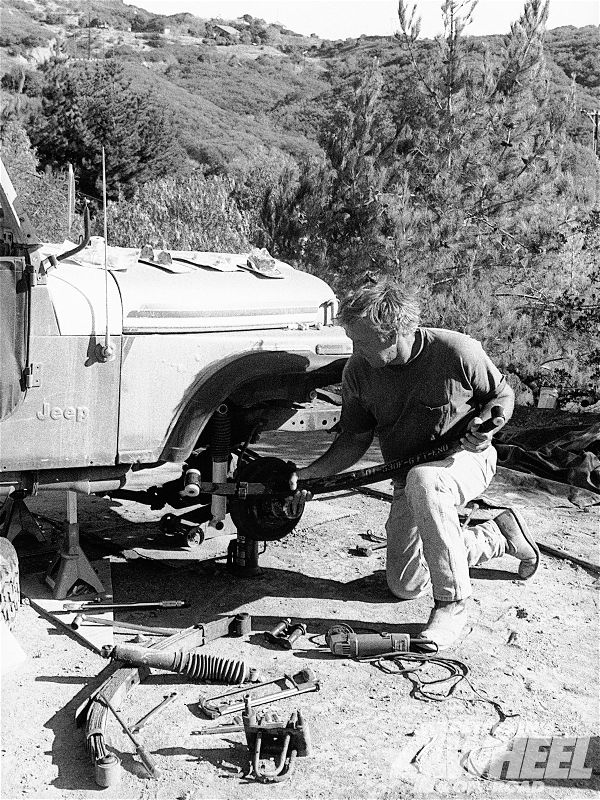 Rick Péwé
Editor-in-Chief, 4Wheel & Off-Road
Photographers:
Rick Péwé
Rick Péwé
Editor-in-Chief, 4Wheel & Off-Road
Photographers:
Rick Péwé
This story may seem a little basic for our seasoned readers, but slapping on a leaf-spring lift kit isn't always as straightforward as you might think. This is especially true on an older 4x4, where some of the instructions just don't cut it. "Remove bolt from bracket" may actually require a torch and a 2-ton hydraulic press instead of a Crescent wrench. In addition, other components may need to be replaced due to wear and tear, and it's much handier to get these extras first so you don't have to leave your 4x4 on jackstands and walk 10 miles to the parts store just to finish the job.

That's one of the reasons we called 4 Wheel Parts Wholesalers for our lift kit. The company stocks complete kits and replacement parts, and mail order can be extremely handy if you live in the hills or your schedule just doesn't jibe with running around and picking up parts. One phone call delivers everything to your doorstep, and technical advice is also just a phone call away.
We decided to tackle a fairly representative vehicle, a '76 CJ-7 with unidentifiable re-arched lift springs that rode terribly. The Jeep has 33-inch tires and sees a variety of terrain, so Pat McCarty at the Van Nuys, California, 4 Wheel Parts Wholesalers store suggested Superlift 2 1/2-inch springs with Rancho RS 9000 adjustable shocks, and he recommended new U-bolts front and rear. With parts in hand, we decided to show you how to do it yourself, and we decided it would be a genuine in-the-dirt installation without the benefit of a clean shop, a level floor, and every tool known to man. If you're lucky enough to have a concrete slab, air tools, adequate lighting, a fan or a heater, or any other luxuries of the trade, your experience may be easier and quicker. However, there are some who thrive on adversity or can't afford a shop to install their parts. Whether you fall into the first or second category, follow along as we peruse the pitfalls of poor planning and show you the nitty-gritty of doing the job right.
PhotosView Slideshow
















